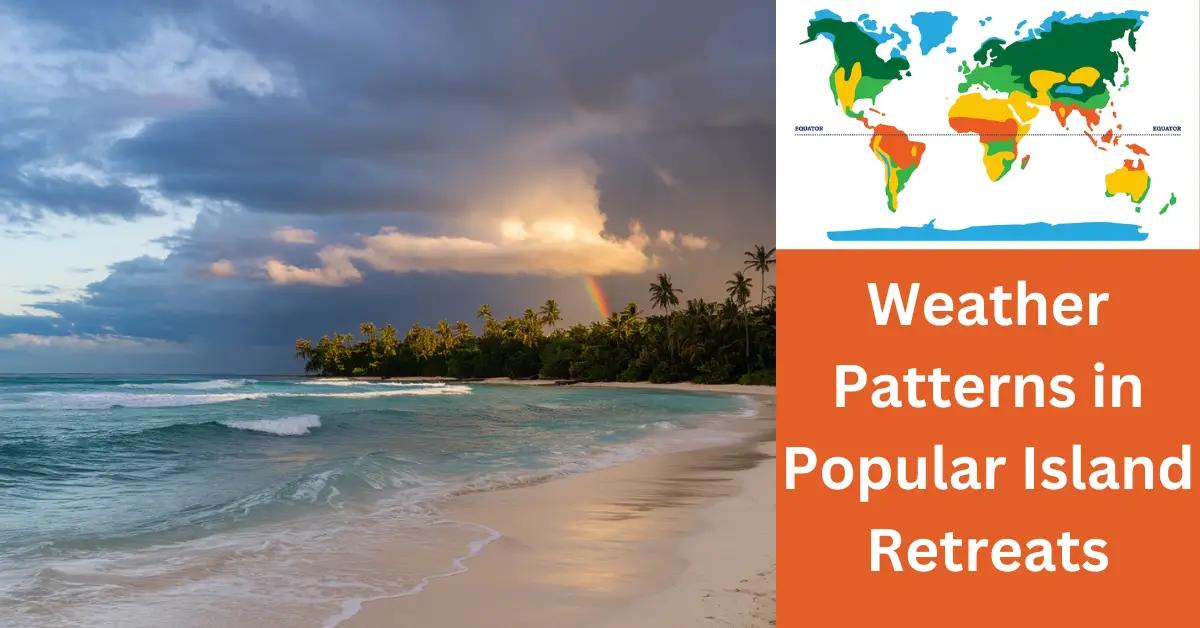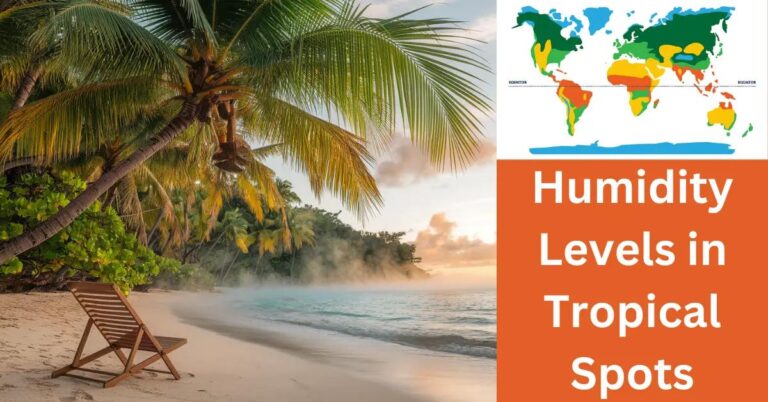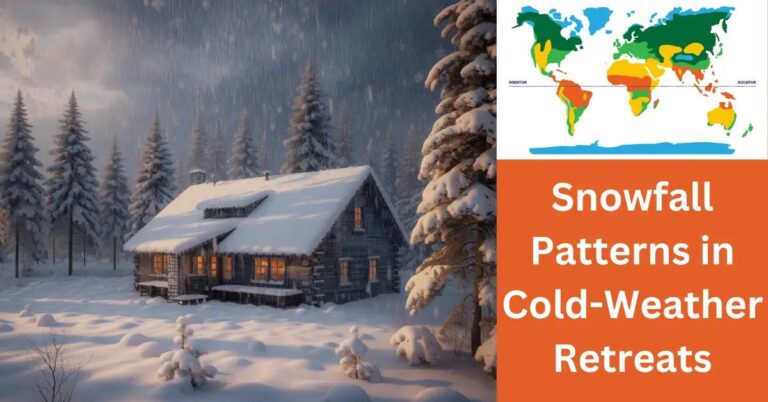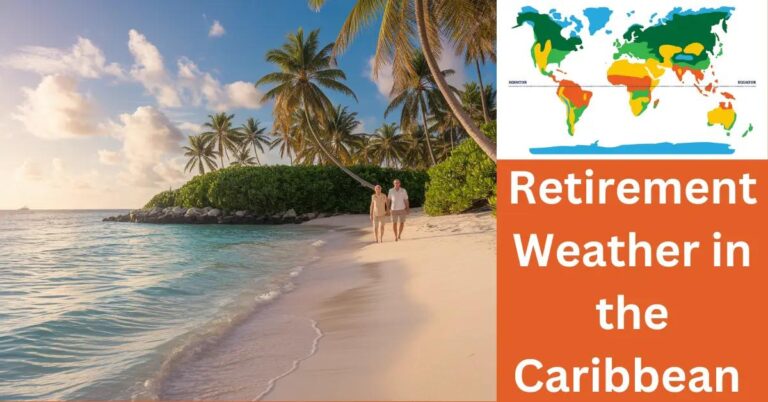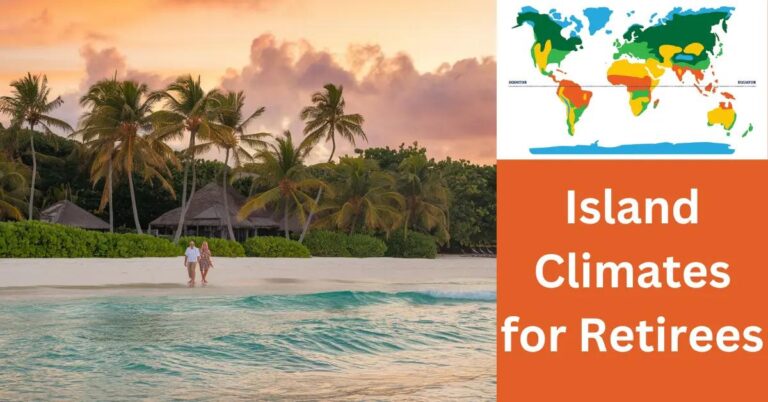TL;DR:
- Island weather is generally tropical with two main seasons: wet and dry.
- Wet season: November to March in Hawaii, June to November in the Caribbean, often brings storms.
- Dry season: Typically December to April, features clear skies and is popular for visitors.
- Temperatures range from 70°F to 85°F year-round with high humidity levels.
- Hurricanes frequent the Caribbean from June to November.
- Island climates vary: Canary Islands are cooler due to winds, Maldives are hot and wet year-round.
- Planning involves checking weather forecasts, packing waterproof gear, and preparing for sudden weather changes.
- Weather impacts tourism with preferences often for dry, sunny conditions.
- Islands have unique microclimates affecting ecosystems, with weather influencing wildlife behaviors and migration.
Planning a trip to an island? Curious about the weather you’ll encounter? From sunny days to sudden rains, understanding island weather can make or break your experience. As an expert traveler, I’ll walk you through common weather patterns and climate differences among popular island retreats. You'll learn the best time to visit, how weather affects tourism, and how you can prepare for any surprises. Let's explore island weather together!
What are the most common island weather patterns?
Island weather is a world of its own, often warm and inviting. Islands mostly enjoy tropical climate conditions, with temperatures staying pleasant all year. So, what type of weather do islands have? Islands usually have two main seasons: wet and dry. The wet season brings rain and storm clouds, while the dry season bursts with sunshine.
Common weather patterns on islands can surprise you. Tropical islands like Hawaii have a wet season from November to March. During this time, rain showers might catch you off guard, mainly in the afternoons.
The Caribbean islands also share a similar tropical climate. They face hurricane threats from June to November. But, when storms pass, beautiful skies return.
Tropical islands have humid conditions that can make you sweat in seconds. On islands, the air holds lots of moisture. It can feel heavy, making you reach for water often. This high humidity is a hallmark of island weather.
Not all islands share the same climate tale. Some have tests of unique climate differences. For instance, islands like the Canary Islands see cooler, dry winds due to geography. In contrast, the Maldives stays hot and wet year-round with only slight shifts.
Seasonal weather changes can swing drastically between islands. Bora Bora may have a stormy season from November to April, while the Seychelles stays blissful and balmy. Understanding these patterns helps choose the best travel time.
Staying informed about island weather can change your entire trip experience. Each island tells its own weather story with unique climate underscoring every adventure. To plan better and enjoy more, learn how weather affects your island retreat.
When is the Best Time to Visit Popular Island Retreats?
The best time to visit islands often depends on the seasons they have. You might ask, "What two seasons do most Caribbean islands have in common?" The answer: wet and dry. The dry season offers clear skies and sunny days, perfect for beach time. It usually spans from December to April, which is why many choose to travel then.
However, the wet season, from May to November, has its charms too. You can expect fewer crowds and lush, green landscapes. Keep in mind, though, the wet season can bring monsoons. These are heavy rains that might impact your plans. Knowing when these occur helps you plan better.
Understanding island temperature variations is key. On many islands, temperatures don't change much. They usually range between 70°F and 85°F all year round. But how much sun you get can vary. During the dry season, daily sunshine is common. In the wet season, clouds and rain showers are frequent visitors.
Planning for the rainy season might seem tricky. Always check the island’s weather forecast before you go. Bring light, waterproof gear and be ready for changes in plans. Some islands celebrate the rain with festivals and events, adding fun to your trip.
In sum, picking the best time to visit islands involves understanding their weather patterns. The Caribbean, for example, thrives in both dry and wet seasons. Identifying when to travel aligns with what you want from your island escape. Whether you seek sun-drenched days or serene, rainy quiet, knowing the seasons helps you enjoy your stay to the fullest.
How Does Island Weather Affect Vacation Planning and Tourism?
Island weather plays a huge role in planning trips and tourism. When it comes to the Caribbean weather pattern, temperatures are often warm, and humidity can be high. Islands in the Caribbean generally have two main seasons: wet and dry. During the dry season, you can expect sunny days. The wet season brings more rain and humidity. This weather pattern shapes tourism by determining when most visitors arrive.
Visitors often seek what I call "perfect beach days" for their vacations. This means knowing when the weather is likely to be sunny. Weather forecasts become a key tool for planning the ideal vacation. They help predict rain, storms, or perfect sunbathing days. You can pack your bag wisely by checking reliable forecasts. This avoids unexpected weather surprises that can affect your plans.
Different islands have their unique climates. Comparing these helps when picking an island destination. Some islands might suit a relaxing sunny getaway, while others attract adventurous visitors who enjoy storms and rain. Weather variations among islands sometimes reflect in their cultural practices. For example, island cultures often depend on the weather for festivals, food, or special events.
Tourism adapts itself to island weather, driving the economy when conditions are favorable. I have seen that tourism dips during storm seasons and picks up again with clear skies. Local traditions, festivals, and food usually intertwine with the seasonal weather. The weather impacts tourism by influencing visitor experiences and local culture. Islands thrive on tourism, so knowing the weather pattern in advance aids in creating lasting travel memories.
For a detailed look into specific local climates, consult reliable weather forecasts and reports that offer deep insights into island weather trends.
How can travelers prepare for island weather variations?
What are the weather patterns in St. Lucia? They are tropical with warm temperatures and humidity. Rainy season runs from June to November. Travel plans need flexibility due to these changes. Sun and rain can arrive quickly.
Key considerations for packing include light clothing and a waterproof jacket. It's essential to stay dry and cool. Don't forget sunscreen and hats to protect from the sun. Packing for island weather requires balancing between wet and dry.
Ensure smooth travel during island seasons by checking forecasts. Look at changes in flights and hotels. This keeps you safe and enjoys your trip. Plan your activities around the expected weather.
Island weather safety tips involve checking warnings. Watch out for signs of storms or high winds. Knowing these can keep you out of harm's way. It's smart to have contacts with local services.
Adaptive island travel plans are smart. Be ready to change what you do based on predictions. Fun can be had despite the rain by visiting indoor attractions. Island weather can change quickly, so stay prepared.
Prepare for unexpected island weather by having backup plans. Indoor activities are great alternates if it rains. Simple advance planning makes a big difference for safety and comfort.
Exploring island weather safety tips can be helpful. It's important to stay informed and ready. Being prepared means fun, safe, and stress-free travel. Different weather patterns need mindful preparation for a great island visit.
How do weather patterns influence environmental and wildlife conditions on islands?
Weather patterns play a huge role in shaping island environments. When we look at island regions, we often see changing environments due to weather shifts. For instance, some islands face erosion because of heavy rains and waves. This can alter the shape of the island's coasts.
The impact of weather on island wildlife is big. Many animals and plants depend on specific weather for survival. Sea turtles, for example, lay eggs during certain seasons. If the weather changes, it can affect their nesting cycles. Likewise, birds might change migration routes if the weather patterns shift.
Island ecosystems battle to stay strong against tough weather conditions. Resilience refers to how well these ecosystems can bounce back or adapt. An island's climate resilience involves various factors, like its type of plants, animals, and coral reefs. Ecosystems like mangrove forests often help protect islands from storms.
Understanding island microclimates helps us grasp how weather works on islands. Microclimates are small areas with specific climate conditions, different from their surroundings. This can mean a patch of land on the island stays cooler or wetter than the rest.
Comprehending island weather cycles shows us the predictability in their climates. Islands can have dry and wet seasons, impacting life cycles of plants and animals. Some islands have cyclic weather patterns linked to larger systems, like El Niño or La Niña. These cycles impact everything from the flowering times of plants to the breeding patterns of fish.
Islands have weather microclimates that make them unique. Understanding these small climate zones teaches us a lot about how weather patterns define the environment and life on islands.
Conclusion
Island weather varies with tropical climates, seasonal shifts, and island differences. Knowing this helps you plan visits and pack wisely. Weather impacts tourism and local culture, making understanding essential. Proper preparation helps with unexpected changes. Keep these insights in mind as you plan island adventures. Understanding island weather keeps your travel smooth and fun.

